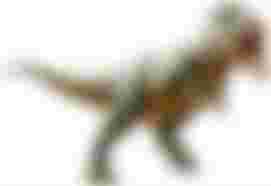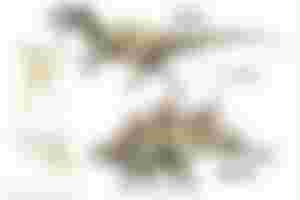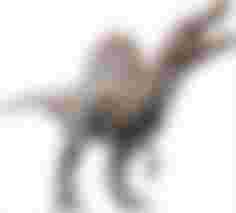
Dinosaur story
Not so long ago, only 541 million years ago, as the age of the old universe. It's been 396 million years since the world came out of the abyss. This story was then.
A few days ago, it was as if someone had wiped the snowball-shaped earth clean. Even though the ice cover is gone, there is a feeling of coolness all around. Everything seems to have come to a standstill. It seems that the pendulum has suddenly become a hobby to take a break.
At that time, the body and mind of a huge continent called Rodinia (Panosia) began to break down in pain and separation. The Revolutionary Cambrian has begun.
Welcome to Cambrian.
The Cambrian appears with a torch of light to dispel the darkness of the new moon, when the tiny multicellular and even smaller unicellular creatures are playing around.
(In 2019, a well-known word for cricket fans was Wales, the Latin name of that Wales is Cambrian.
The evolution of that strange, bizarre or egg-laden Cambrian was well suited to feed someone vyabachaka. So many creatures together! How brother?
Thanks to the powerful cyanobacteria and algae, what is the power to give oxygen ?!
Like many other fields of science, there is still a lot of research going on with this Paji Cambrian.
Biodiversity was then well diversified. From cordata to vertivrata, from arthropods to crustaceans (no shrimp, no insects, shrimp is crustacea! So tasty!), A variety of such creatures then emerged. Min went into the water. Their fossils were found very nicely due to the emergence of strong shell animals.

Trilo bytes were seen all over the place. The shape of this strange creature was the same as when the human head and ribs were beaten separately with a hammer and inserted straight into the amber. Opabinia was like a steel toy plane with a long nose. Pikaiya cute like a snail wandering across the sea, of course with a pink coating!
In the late Cambrian and pre-Ordovician, the first truly vertebrate species of fish, the Astracodermas, originated, to be well remembered.
The Ordovician reign began after the Cambrian. This reign of 50 million years ended with the second great destruction in history.
The continent was then divided into 4 parts and the ocean was divided into three parts. Mr. Prithvi then began to get the green kiss for the welfare of the first trees in history. Just like the first touch of Sakhi! That touch is a little sad.
The pantheistic sea is drowning North America again and again, like the song I am drowning. There are many new creatures to be found in the Ordovician period as well. Someone was getting lost again in the traditional course of evolution in the abyss of time. Condensed like a slope appeared in the middle of the colorful coral reef. This thick-eyed vertebrate seemed to disappear quickly.
How many simple animals in the crowd of simple straight vertebrates should not be forgotten!
The Trilobites, the king of the Cambrian, began to lose kingdoms to the triumph of brachiopods, cephalopods, and cranioids with calcium carbonate shells all around them. In the midst of all the other gangsters, Ice Age as a real gangster lost almost all kingdoms.
Silurian can be seen from the end of the ice age. Trilobites, molluscs, crinoids, those who survived the battle of life, they began to decorate themselves in a new way. The fish with jaws also began to roam proudly in the sea. The trees named Kuksania and Barragwenthia were growing little by little in the ground at that time. They must be well remembered!
Shortly afterwards, Silly Silurian died prematurely, unable to cope with the effects of climate change.
Devonian, The Age of Fishes started about 41 to 35 crore years ago! When I heard the fish, I remembered Padma Hilsa? Of course, Rad was seen as a grandfather many years ago.
That time was a golden age for fish. Agnatha (jawless), Acanthodii (thorny), Placoderms (armored), as well as chondrichthyes, ostrichthis are no more. Tiktaalik rosae tetrapods grow on the Earth's surface with the magical ability to bend crocodile-like heads, necks, and the ability to breathe out of the most impertinent waters. Must keep!
With the help of trees like Horstail, Lycophyte and Fern, the earth is filled with greenery again. The seeds quickly turn green like wildfire. The final outcome of the Devonian occurs.
Another era began 35 to 290 million years ago, Carboniferous. The fern with its fourteen clusters began to spread around, saying, "I will go wherever the two eyes go." This name is in gratitude for the pie as. Sadly (!) We weren't there to pollute the air at the time, so the amount of oxygen was horrendous, about 33%. With that huge amount of oxygen, the insects began to swell. 5-6 feet long centipedes were also available at hand. A Heaven for Bear Grills Uncle! Another thing, girls' favorite cockroaches also started getting fat then. Nadusanudus 3-foot cockroach to think of the mind is covered! Ah!
Amphibians were then drowning in the tide of development. They also need to be well remembered.
Carboniferous ends with the formation of pangea by the continents that have survived so long.
The time to go to the Paleozoic era is approaching, the Mesozoic era is coming soon. Welcome to Permian for now.
Reptiles are slowly emerging from amphibians. Reptiles and mammals: Like reptiles, the world is overflowing. The world is tired of watching monsters like Gorgonspeed, Disinodontus, Dimetradon fight and raise their voices again. The Permian period ends with one of the greatest catastrophic works in history. Many hypotheses have been put forward, such as the untimely eruption of a volcano or a meteor carrying a death procession from a distance.
Four children were born in the house of Arcosor, a surviving survivor from Permian. None of the four men allowed the former man's name to fade. The sky is occupied by peacocks, small rivers are occupied by crocodile type animals, mojas are occupied by seas, and dinosaurs are occupied by land.
There are many stories, let's rescue fourteen groups of dinosaurs.
Fourteen groups of dinosaurs
The word dinosaur comes from the Greek de (deinos-terrible) and σαῦρος (sauros-reptile). Thanks to Sir Richard Owen for such a terribly beautiful naming. Although many more dinosaurs have been found before him, all of them have remained disrespectful except megalosaurus.
Dinosaurs are basically divided into two parts according to the hip bone structure.
1. Sariskia
2. Ornithiskia
(These were done by Mr. Harry Seeley, a good student of Akika Wayne Sir!)
Saurischia (lizard hips): The pubis and ischium bones of Saurischia's buttocks are scattered like best friends in the opposite direction (almost opposite). As with all the giant, evil, cowardly carnivorous (theropod) dinosaurs included in this section, many simple, easy vegetarian (sauropod) dinosaurs also find a place here. Capture the structure of Ornithiskian as a descendant ?! This was probably enough to put lime on the face of the dynasty. In the course of evolution, the pelvic-like bird appeared twice in the world of dinosaurs.
T-Rex, known as Tyrannosaurus X, Spinosaurus, Gaiganotosaurus and many others were among the lights of this family
Ornithischia (bird hips): Ornithischia is a simple, straightforward, humble, polite, calm-tailed, vegetarian dinosaur. So its pubis and eskium were very close to Maya's obsession in parallel. The bones of the bird are exactly the same. Although the birds are none of them, their similarities with the birds are very sweet. Probably the jawbone of Predantari and Premaxilla can be seen in their jaws to match the birds. The kebab also has the advantage of bones, the young green leaves could be simply chopped and eaten. In the history of evolution, they used to jump a lot, once on two legs, sometimes on four legs, once on four legs, sometimes on two legs, just like frogs are confused by water, land, land, water. To name a few, Spikewala Stegosaurus, Iguanodon, Ankilsor are among them.
The Sariskians are again divided into two groups.
1. Saropadomorpha
2. Theropoda
Saropodomorpha: This name comes from the Greek word meaning lizard-like creature. They were as big on the body as they were in the past. They were as tall as a palm tree. The largest Saropodomorph species stood 30-40 m (100–130 ft) in length and exceeded the body mass limit of 60,000–1,000,000 kg. As a result, their speed is relatively slow. Although they could eat everything at first, they also got into the bad habit of eating grass and herbs in the course of evolution.
Theropoda: Their Greek names mean the legs of animals. Strange names, it seems that they were the only animal in the world. At first they were all carnivores but later many fell into the task of drowning the name of the dynasty. Some start eating everything like monsters, some start eating grass-leaves like modern goats, some try to eat fish-rice like Bengalis, there are others who start eating insects like Uncle Beer Grills. In the Jurassic period, birds evolved from Silurosaccharide dinosaurs, one of the descendants of Theropods. Spinasras, Giganotus, Carcaradontosras are some of them.
Ornithiskians are again divided into two groups.
1. Serapoda
2. Thyriophora
Serapoda: The word serapoda is derived from seratopsia (horned mouth) and ornithopoda (bird-like legs). Although no similarity was found between the name and its descendants. The interesting fact is that they have enamel on their teeth, so if you ever go around in a time machine, you can take center fruit for them.
Thiriophora: The ancient Greek words θυρεος (thirios) or "rectangular shield" and φορεω (forio) meaning "carry" can be found from the very beginning when looking at the source of the name of the dinosaur branch called "Thiriophora" meaning "armored", (you can fight Mebi!). This type of armor is found on their bodies. Instead of decaying day by day, the armor grows like a rose, but the thorns are much stronger than the rose.

Mantra of Panchatantra
1. Tyrannosaurus X: Tyrannosaurus X, also known as T-Rex, is one of the best dinosaurs. Many are well acquainted with them in the movie Jurassic. The Greek word stands for Tyrant Lizard King, in fact he was the King of Kings, an all-rounder. Like other tyrannosaurids, Tyrannosaurus waslands were carnivorous, chubby (!), Long and stout with heavy tails. Their front legs were very small but unusually strong in size. This carnivorous animal could reach a height of 40 feet, where the average height of a human is 5 feet, there it is 40 feet! Imagine another man standing on the neck of a man, the height of a T-Rex is the height of 6 people standing like this. The weight was also much more than 4-6 metric tons! Can you imagine? Of course, after getting other legends can be thought of. Their speed was 26 km per hour. They sometimes killed dead dinosaurs.
2. Stegosaurus: Stegosaurus means roof lizard. The name is due to the steep spikes on the back. The spikes were often 2 feet long and wide on both sides. Many fossils have been found from the western part of North America and Portugal in Europe. Unusually shorter than that, the length of the neck was also quite short. The brain was smaller than that. By comparison, they were about the size of a dog. They were about 26 feet long and about 12 feet high. They weighed between 4-5 metric tons. Running at a speed of about 8 km per hour.
3. Archeopteryx: Archeopteryx (Ancient Greek: ἀρχαῖος: archaios means ancient and πτέρυξ pteryx means fur or wings). This prehistoric bird used to roam proudly in southern Germany. Was. As such, it has some characteristics of both birds and theropod dinosaurs. They weighed about 1 kg and had speeds of about 6 km.
4. Spinosaurus: The name Spinosaurus basically means Spine Lizard. It is a perfect name for a dinosaur with a spine of 5 and a half feet. Dinosaurs in fish rice. 16-17 feet. Their speed was about 16 km per hour.
5. Diplodocus: The name Diplodocus means two rays. Where did the rays come from in the dinosaurs? Worry! Nah, not so much a ray, this weird tail is the weirdly shaped chevron bone for this weird nomenclature. Diplodocus is distinguished by its long neck, strange tail, and plump body. Diplodocus was 90 feet long, full-length school bus less than 40 feet long, and this calculation is unimaginable.
FAQ
1. Which is the tallest dinosaur?
A. Argentinosaurus, 40 m.
2. Which is the thickest (heaviest) dinosaur?
A. Argentinosaurus, 6 tons.
3. Which is the smallest dinosaur?
A. Lesothosaurus, the size of a chicken. (Oculodentabis has been placed in the hypothesis.
4. Which is the largest brain dinosaur?
A. Trudeau
5. Which is the smallest brained I mean donkey type dinosaur?
A. Stegosaurus, Walnut Size Brain, Only 75g; 3cm:
6. Which is the fastest dinosaur?
A. Struthiomimas, 60 km / h
6. Which is the longest named dinosaur?
A. Micropachycephalosaurus means small head fat lizard.
6. Which is the most feared dinosaur?
A. T-Rex.
9. What is the size of the smallest dinosaur egg ever found?
A: 3 cm: is equal to the brain of Steghosras!
10. Which dinosaur's Akika was first celebrated, named I Min?
A. Megalosaurus.
11. How many species of dinosaurs are there?
A. About 800.
12. Which dinosaur laid the biggest egg?
A. Macrolangatulithas, 48 cm.



I found out when you shared